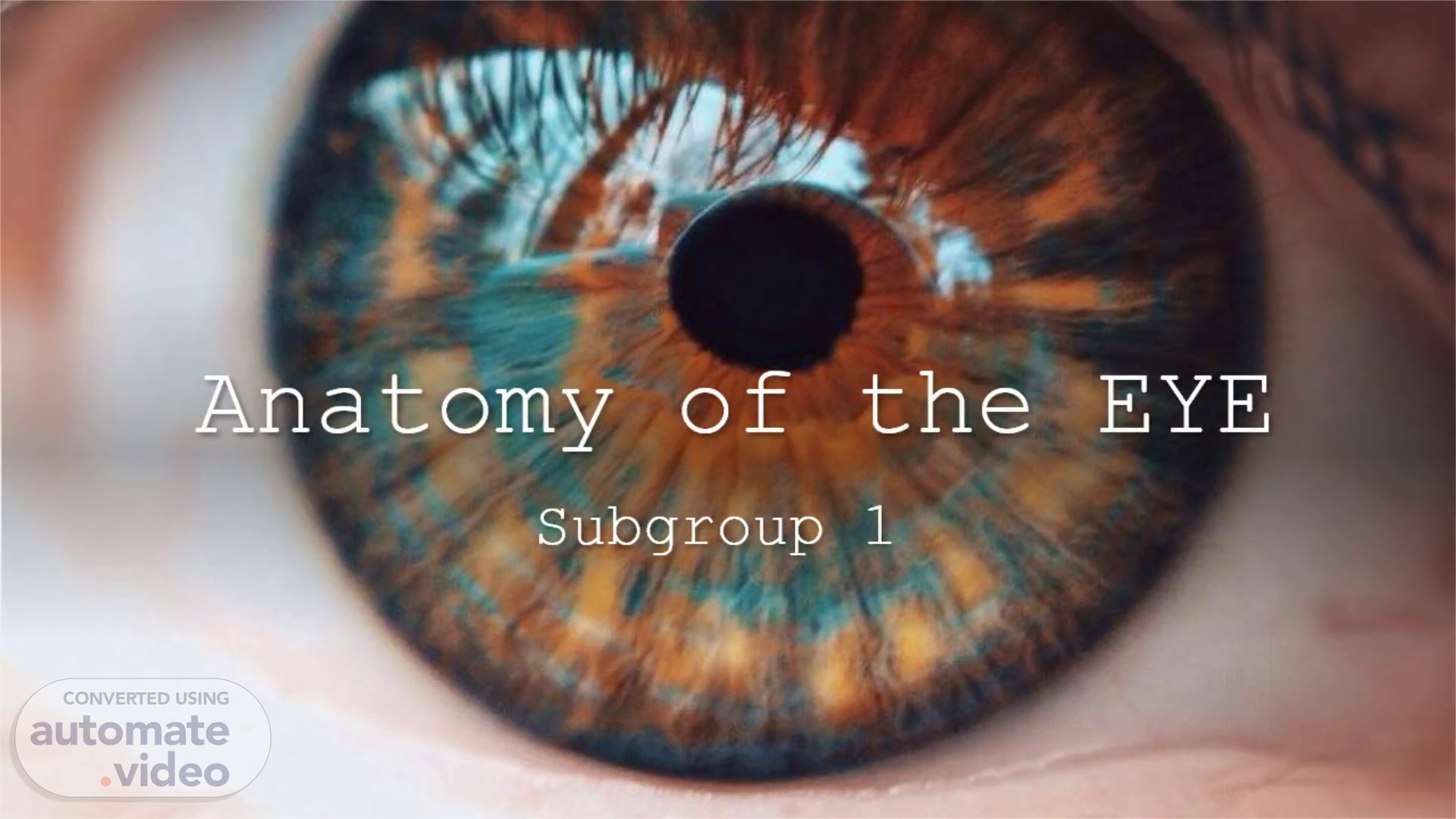Scene 1 (0s)
Anatomy of the EYE. Subgroup 1.
Scene 2 (7s)
Basic Structures of the Eye. Diagram, schematic Description automatically generated.
Scene 3 (15s)
Diagram Description automatically generated. Cornea.
Scene 4 (37s)
Diagram Description automatically generated. Diagram Description automatically generated.
Scene 5 (1m 7s)
Cornea injury. Diagram, schematic Description automatically generated.
Scene 6 (1m 38s)
Sclera. Diagram, schematic Description automatically generated.
Scene 7 (2m 2s)
Aqueous Humour. 图示 已自动生成说明. Aqueous Humour, o ptically clear, slightly alkaline liquid that occupies the anterior and posterior chambers of the eye. the space in front of the iris and lens and the ringlike space encircling the lens. The aqueous humour resembles blood plasma in composition but contains less protein and glucose and more lactic acid and ascorbic acid. It provides these nutrients (as well as oxygen) to eye tissues that lack a direct blood supply (such as the lens) and also removes their waste products. It provides an internal pressure, known as intraocular pressure, that keeps the eyeball (globe) properly formed ..
Scene 8 (2m 29s)
Iris. A picture containing music Description automatically generated.
Scene 9 (2m 48s)
[Audio] There are two types of iris muscles that control the size of the pupil. They are: Circular sphincter pupillae – constricts pupil on contraction Radial dilator pupillae – dilates pupil on contraction The colour of the pupil becomes pale yellow when the lens becomes opaque or cloudy in case of cataract..
Scene 10 (3m 15s)
Lens. The lens is a clear, curved disk that sits behind the iris and in front of the vitreous of the eye. It allows the eye to focus on objects at varying distances by changing its shape . The primary function of the lens is to bend and focus light to create a sharp image. To do that, the lens uses the help of ciliary muscles to stretch and thin out(relax) when focusing on distant objects, or to shrink and thicken (contract) when focusing on near objects..
Scene 11 (3m 42s)
Ciliary Muscle. The ciliary muscle is an intrinsic muscle of the eye formed as a ring of smooth muscle in the eye's middle layer, uvea or (vascular layer). It controls accommodation for viewing objects at varying distances and regulates the flow of aqueous humor into Schlemm's canal..
Scene 12 (3m 57s)
Vitreous Humour. 图示, 示意图 已自动生成说明. The vitreous humour (also known simply as the vitreous) is a clear, colourless fluid that fills the space between the lens and the retina of your eye. 99% of it consists of water and the rest is a mixture of collagen, proteins, salts and sugars. Despite the water-to-collagen ratio, the vitreous has a firm jelly-like consistency. The main role is to maintain the round shape of the eye..
Scene 13 (4m 22s)
Retina. Diagram Description automatically generated.
Scene 14 (4m 35s)
Retina Functions The retina captures the light that enters your eye and helps translate it into the images you see. Light passes through the lens at the front of your eye and hits the retina. Photoreceptors — cells inside your retina that react to light — change light energy into an electrical signal. This signal travels through your optic nerve and into your brain to become the picture of the world you see. Rods – for night vision, most sensitive to light and dark changes, shape and movement and contain only one type of light-sensitive pigment Cones – for day and colour vision, most sensitive to one of three different colors (green, red or blue).
Scene 15 (5m 5s)
Retinal Detachment. Retinal detachment, or a detached retina, is a serious eye condition that affects your vision and can lead to blindness if not treated. Symptoms include flashes of light, floaters or seeing a shadow in your vision..
Scene 16 (5m 21s)
Optic Nerve. 图片包含 形状 已自动生成说明. When a problem develops in the optic nerve, the effect it has on vision may be presented in different ways: Vision loss on one side. This is caused by nerve damage that was contained to the one affected eye. Loss of peripheral vision in both eyes. Results from damage to the space behind the eyes where the optic nerves meet (optic chiasm). Vision loss on one side of the visual field in both eyes (damage on the left side of the brain would cause loss of the right visual field in both eyes). Caused by damage to the pathway that connects the optic chiasm to the part of the brain that registers visual information..
Scene 17 (6m 7s)
Eye Muscles. There are six eye muscles that control eye movement. One muscle moves the eye to the right, and one muscle moves the eye to the left. The other four muscles move the eye up, down, and at an angle..
